Kōsan-ji|高山寺
Overview

A UNESCO World Heritage Site nestled in the mountains of western Kyoto, Kōsan-ji (or Kōzan-ji) was founded by the Shingon sect monk and scholar Myōe in 1206. Saint Myōe hosted salons at Kōsan-ji attended by the wealthy and cultured, and through such practices accumulated numerous artifacts and items that are now valued as National Treasures, including the famous Chōjū-jinbutsu-giga ("Animal-person Caricatures") picture scroll. The oldest tea field in Japan is also located in a humble plot on the grounds- at one time it was considered the only "true" tea plant to make the drink from. Kōsan-ji takes time to reach by bus from the city center, but it’s worth it for an overwhelmingly natural atmosphere and breathtaking mountain views. The view from the Sekisui-in hall is absolutely gorgeous, particularly in the fall season, and towering, ancient trees line the stone steps that ramble through the mountain forests. Fire and war have ravaged the buildings on the property time and again with the oldest building now dating to the Kamakura period, but the forest seems ageless and offers a glimpse into a life of mountain asceticism.
The view from the Sekisui-in hall is absolutely gorgeous, particularly in the fall season, and towering, ancient trees line the stone steps that ramble through the mountain forests.
Features
Mountain Approach
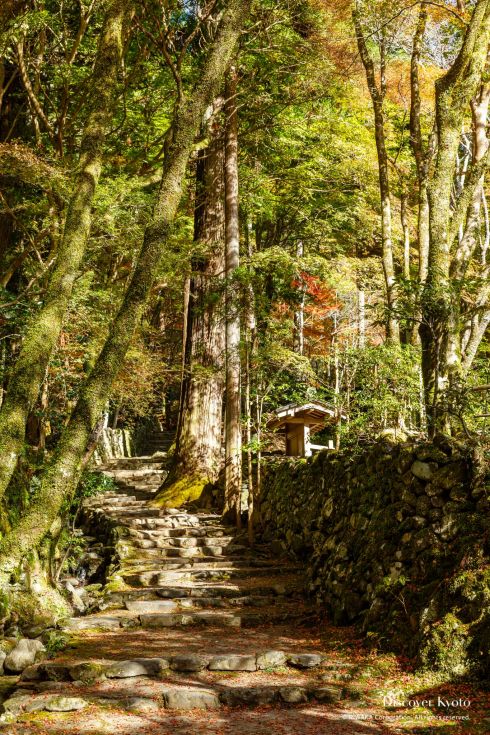
Part of the appeal of Mt. Takao’s three Buddhist temples is their remote mountain location, and Kōsan-ji certainly provides the mountain feeling in spades. The path up to the temple is lined with towering, ancient trees, and worn stone staircases lead up deeper into the forests to the halls and grave markers higher on the slope. A nearby waterfall lends a certain lushness to the greenery, and strangely enough for a mountain, you may be able to spot a freshwater crab skittering among the moss and roots.
Sekisui-in Hall

The oldest extant building on the property, dating back to the Kamakura period when it was transferred from an imperial residence, Sekisui-in was once the temple’s scripture hall. Various treasures can be seen on display in this building, such as a hanging scroll depicting the goddess Butsugen Butsumo (“Mother of the Buddha”), a wooden statue of the gifted Buddhist child Zenzai-dōji, a scroll depicting the founding monk Saint Myōe, and replicas of the famous “Scrolls of Frolicking Animals”. The view from the Sekisui-in hall is absolutely breathtaking, with wooden shutters that open upwards revealing a picturesque view of the Mt. Takao scenery. Whether there are cherry blossoms, fresh green maple leaves, bright orange autumn foliage, or frozen branches, it’s amazing no matter the season. Sekisui-in is also connected to a tea room where you can take a load off and enjoy a cup of green tea and a small sweet.
Chōjū-jinbutsu-giga
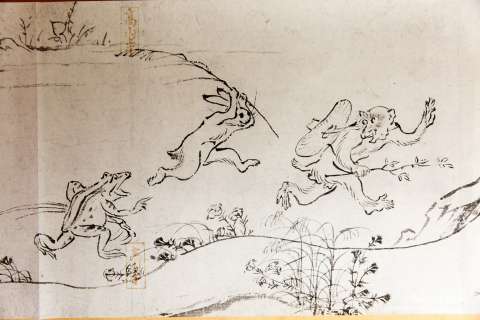
Often referred to as “the first manga”, the Chōjū-jinbutsu-giga, or “Scrolls of Frolicking Animals”, is a set of four picture scrolls drawn in the 12th and 13th centuries. Though it is often said they were created by artist-monk Toba Sōjō, there is no definitive proof of authorship. Considered a satirical work that mocks priests of the day by likening them to animals such as toads, rabbits, and monkeys, it depicts the animals as personified characters going about various activities, such as a wrestling, praying, chasing a thief, going to market, and getting married. Though the original is usually kept from public view with the exception of museum exhibitions, a replica is available to look through in the Sekisui-in hall.
History
The mountains of the Takao area have a long history of Buddhist asceticism, and it’s said that temples under the names of Togano’o-ji and Togano’o-bō existed in the area since 774 by imperial decree of Emperor Kōnin (709–782). Though this cannot be dated precisely, Kōsan-ji’s history began more specifically in 1206 when a Kegon Buddhist priest named Myōe was given permission to establish a temple of his own in order to teach Kegon Buddhism by permission of Emperor Go-Toba.
Myōe (1173–1232) took the temple’s “full” name from the Flower Garland Sutra, naming it Hiidetemazuterasukōsan-no-tera in order to evoke the line from the sutra that states “when the sun rises, that which is first illuminated is the highest of mountains”. In the beginning of the Kamakura period Myōe was given tea seeds by the master Eisai (1141–1215) after his return from China and planted them at Kōsan-ji. Though tea had come to country earlier, Myōe assisted with the popularizing of tea drinking culture from this plot, considered the first tea field in Japan. It became so prolific that at that point in time only tea cultivated from the plants at Kōsan-ji was considered “true” tea, and the tea producing areas of Japan still pay homage to Kōsan-ji in recognition of this heritage.
The monk Myōe led an interesting life, and his activities at Kōsan-ji were part of an intentional removal from the capital city in an attempt to seek further knowledge in Buddhism. Myōe was a strict abbot who fought against corruption in Buddhist organizations, wrote treatises on various ways to enlightenment, and examined mantras, particularly the Mantra of Light. He also found value in the cultivation of various pursuits such as art and expression, and held salons at the temple where noted persons of the age would gather to discuss such things. It is due to these activities that Kōsan-ji possesses a wealth of relics that have survived the test of time, including eight National Treasures and over 10,000 Important Cultural Properties.
Though the temple buildings were destroyed multiple times by fire, Sekisui-in dates to the Kamakura period, the main hall being a transfer from Ninna-ji in the 17th century. To this day Kōsan-ji continues Saint Myōe’s practice of cultural preservation and proliferation, lending out its numerous treasures to be displayed and studied by the public.
Access
Address
〒616-8295 京都市右京区梅ヶ畑栂尾町8
| TEL | 075-861-4204 |
| FAX | 075-865-1848 |
| WEB | http://www.kosanji.com/ |
Admission
- General Admission: Free (¥800 for Sekisui-in)
- Autumn Admission: ¥500
Hours
- General Admission: 08:30 – 17:00
- Closed: No closing days
Transportation
- From Kyoto Station ⇒ JR Bus, Takao/Kyōkitasen Line ⇒ Togano’o Bus Stop ⇒ 15 minutes walking OR Shūzan Bus Stop ⇒ 5 minutes walking
- Karasuma Subway Line ⇒ Shijō Station ⇒ City Bus Route 8 ⇒ Takao Bus Stop ⇒ 15 minutes walking
Gallery
-
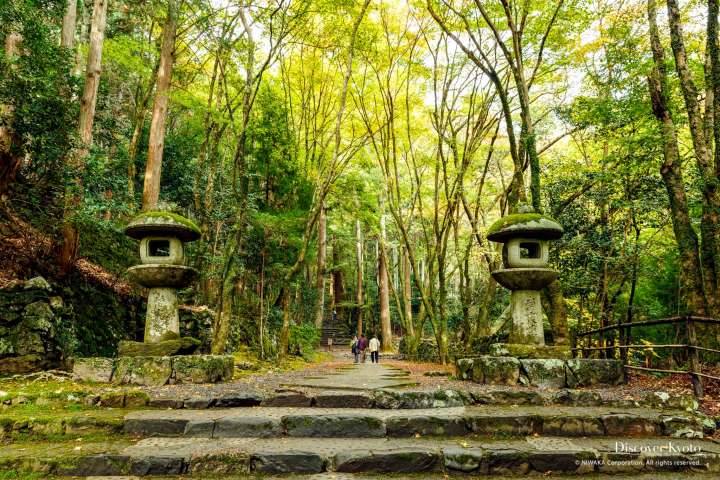

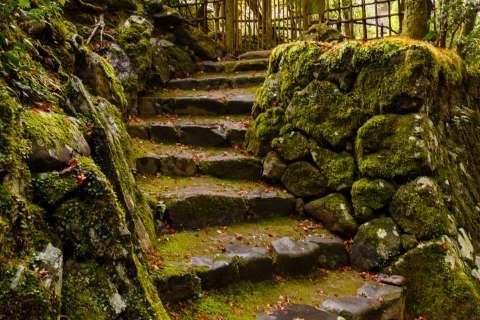
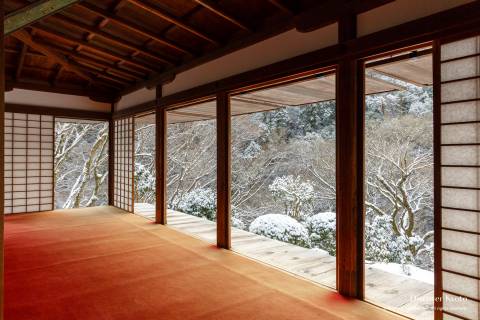
 +26
+26
